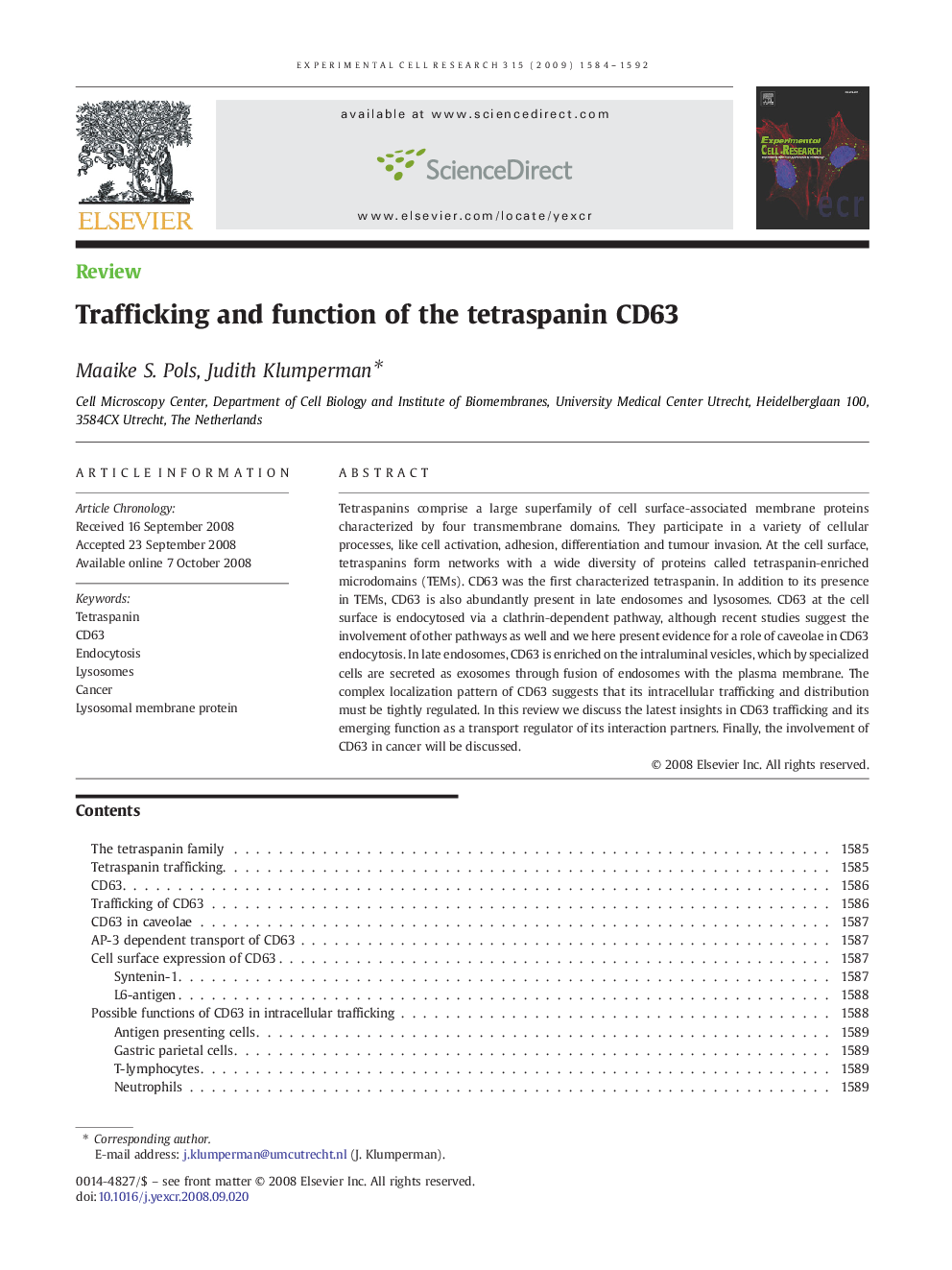| کد مقاله | کد نشریه | سال انتشار | مقاله انگلیسی | نسخه تمام متن |
|---|---|---|---|---|
| 2131683 | 1086654 | 2009 | 9 صفحه PDF | دانلود رایگان |

Tetraspanins comprise a large superfamily of cell surface-associated membrane proteins characterized by four transmembrane domains. They participate in a variety of cellular processes, like cell activation, adhesion, differentiation and tumour invasion. At the cell surface, tetraspanins form networks with a wide diversity of proteins called tetraspanin-enriched microdomains (TEMs). CD63 was the first characterized tetraspanin. In addition to its presence in TEMs, CD63 is also abundantly present in late endosomes and lysosomes. CD63 at the cell surface is endocytosed via a clathrin-dependent pathway, although recent studies suggest the involvement of other pathways as well and we here present evidence for a role of caveolae in CD63 endocytosis. In late endosomes, CD63 is enriched on the intraluminal vesicles, which by specialized cells are secreted as exosomes through fusion of endosomes with the plasma membrane. The complex localization pattern of CD63 suggests that its intracellular trafficking and distribution must be tightly regulated. In this review we discuss the latest insights in CD63 trafficking and its emerging function as a transport regulator of its interaction partners. Finally, the involvement of CD63 in cancer will be discussed.
Journal: Experimental Cell Research - Volume 315, Issue 9, 15 May 2009, Pages 1584–1592